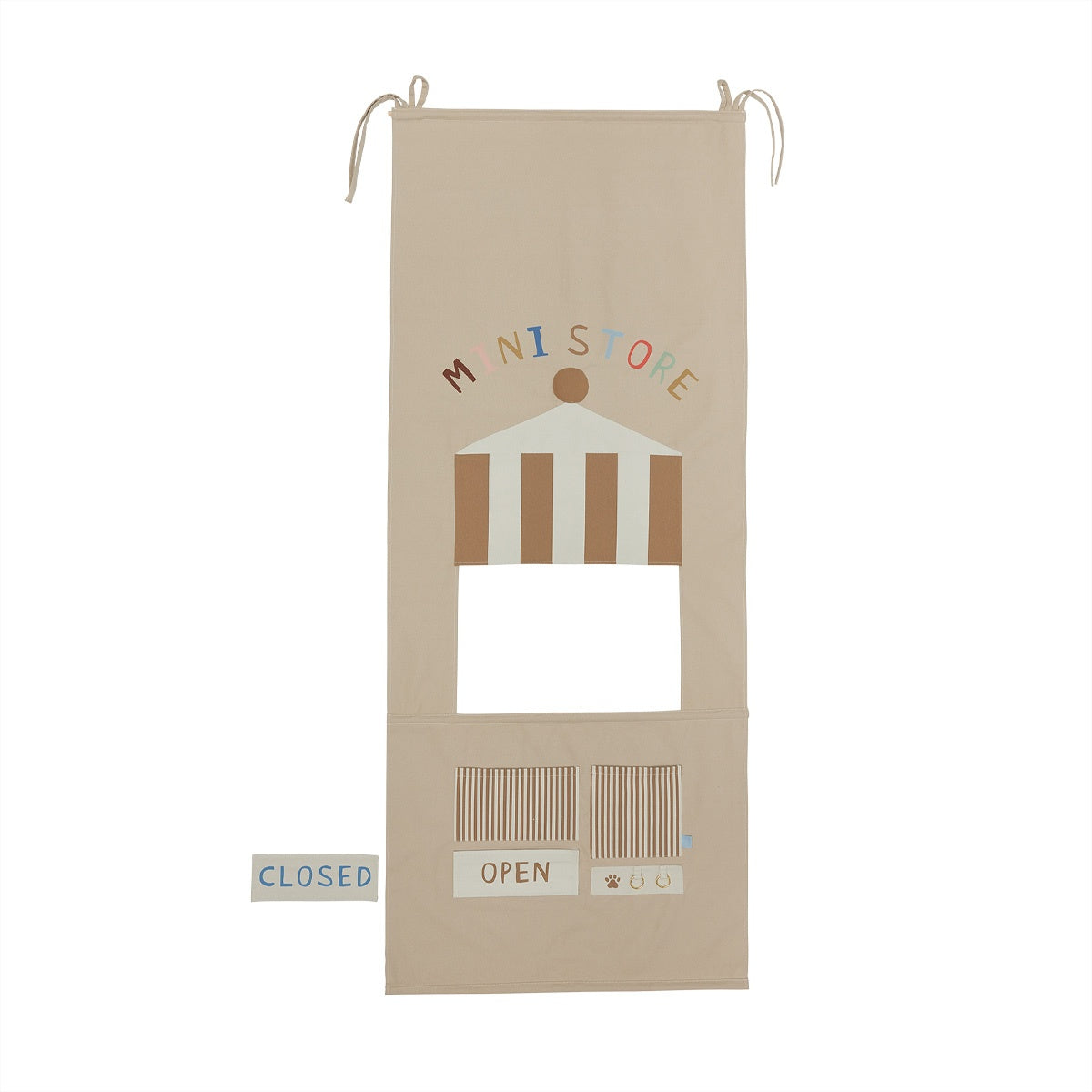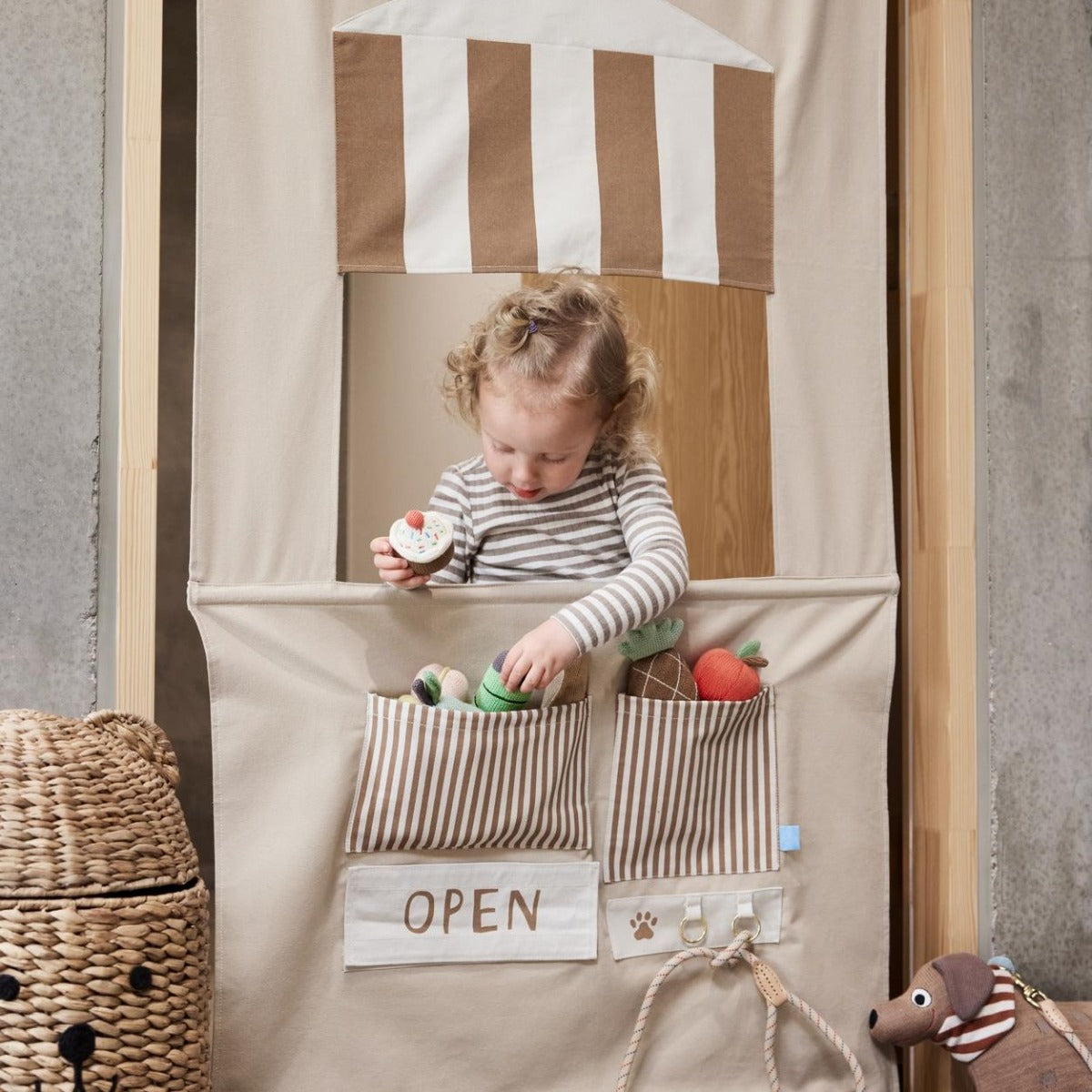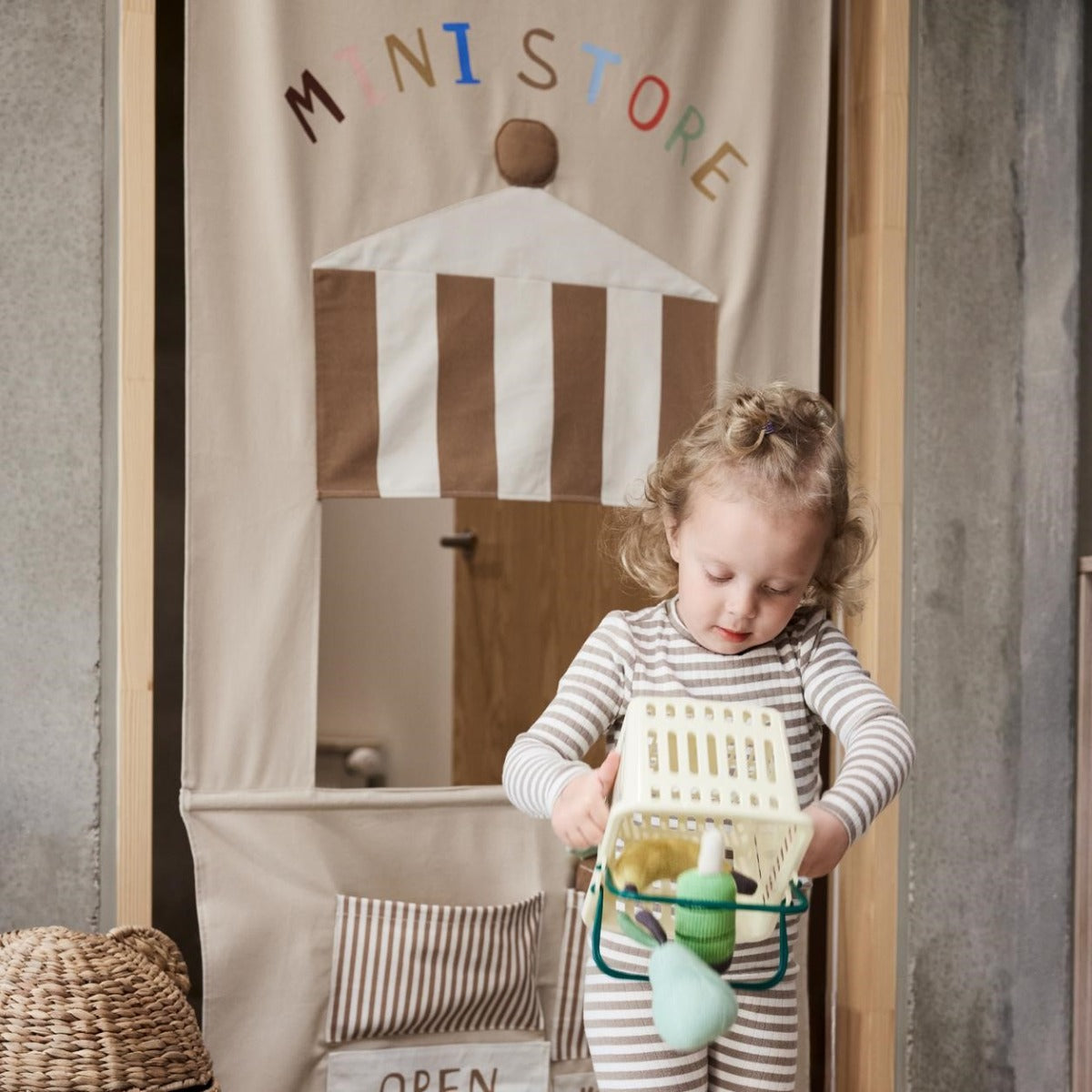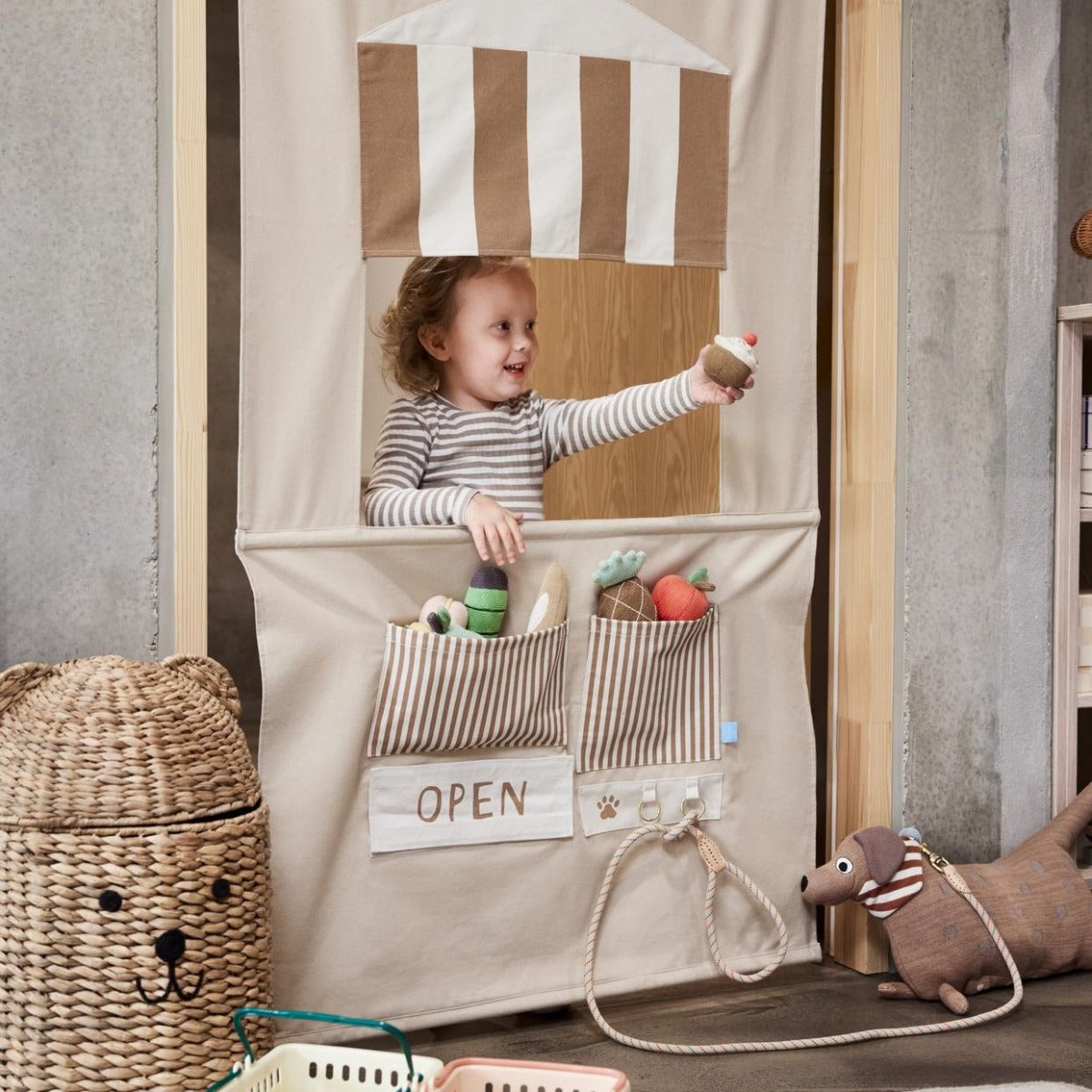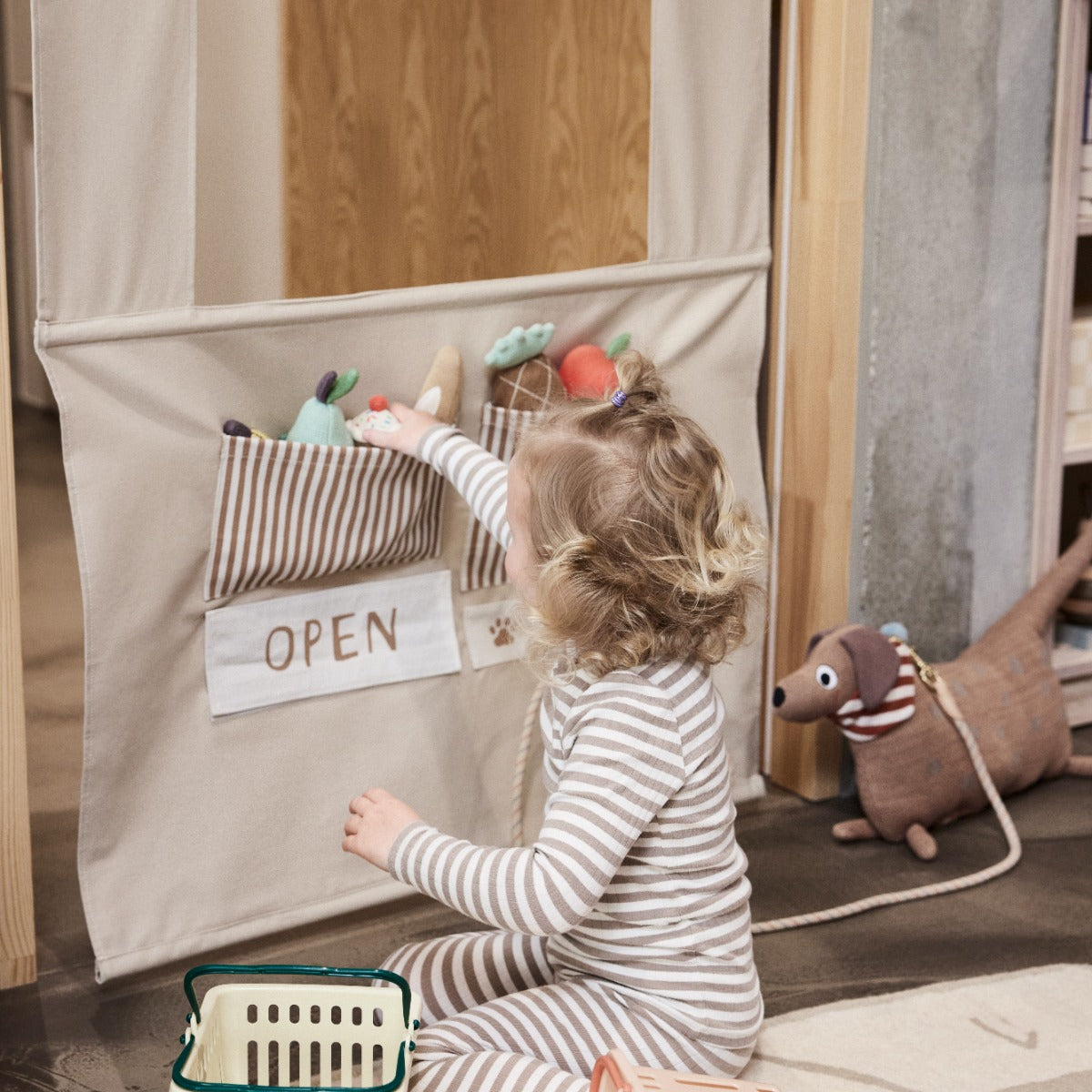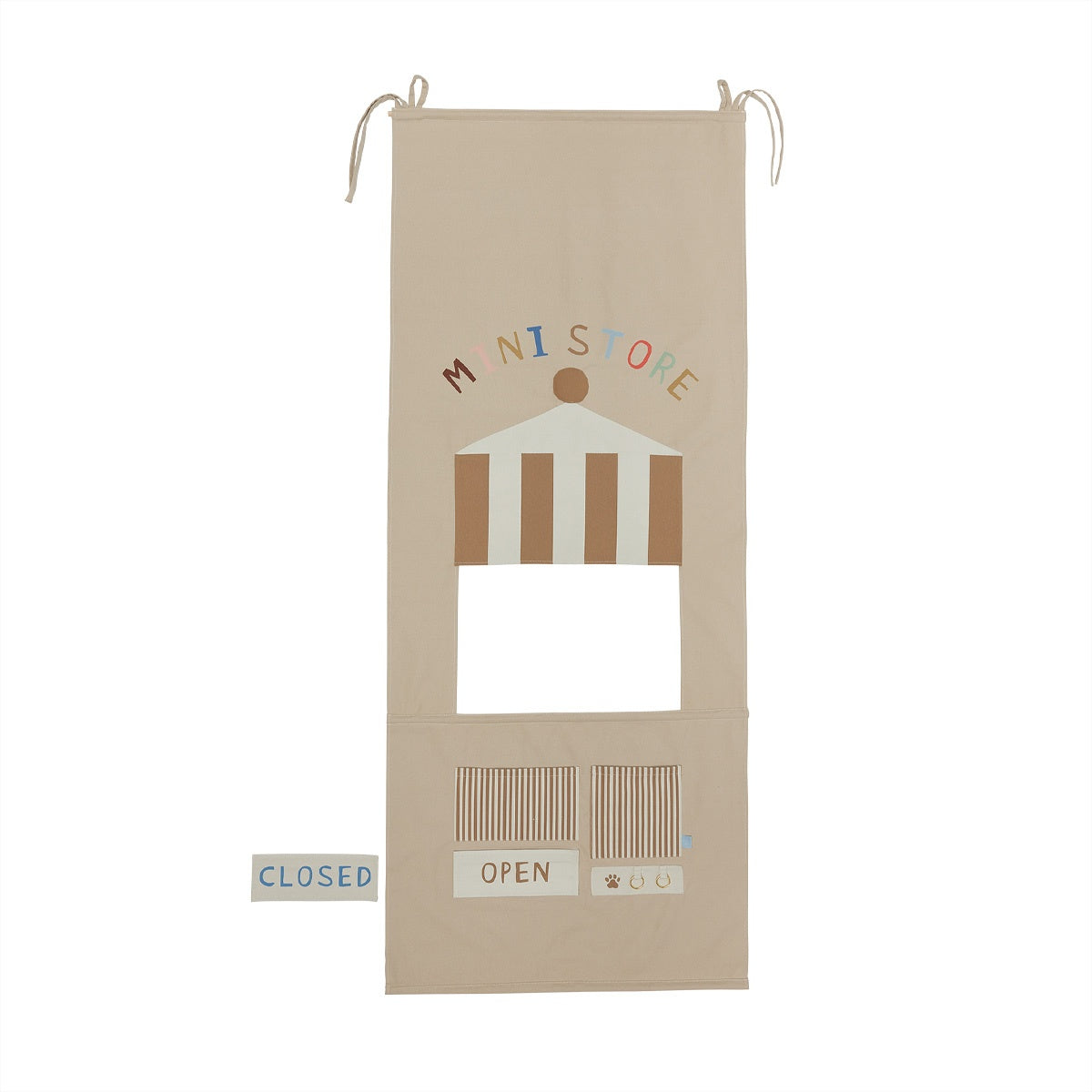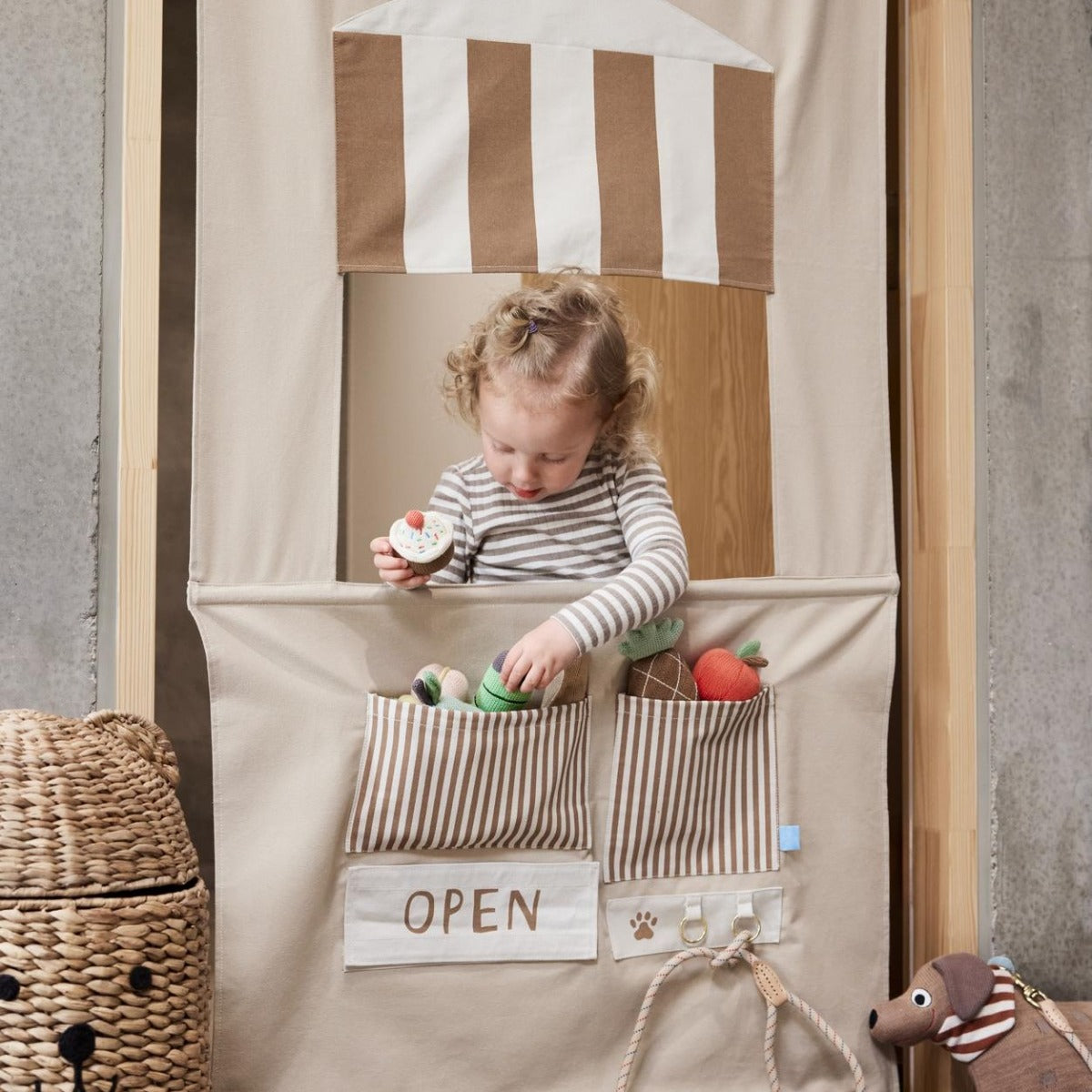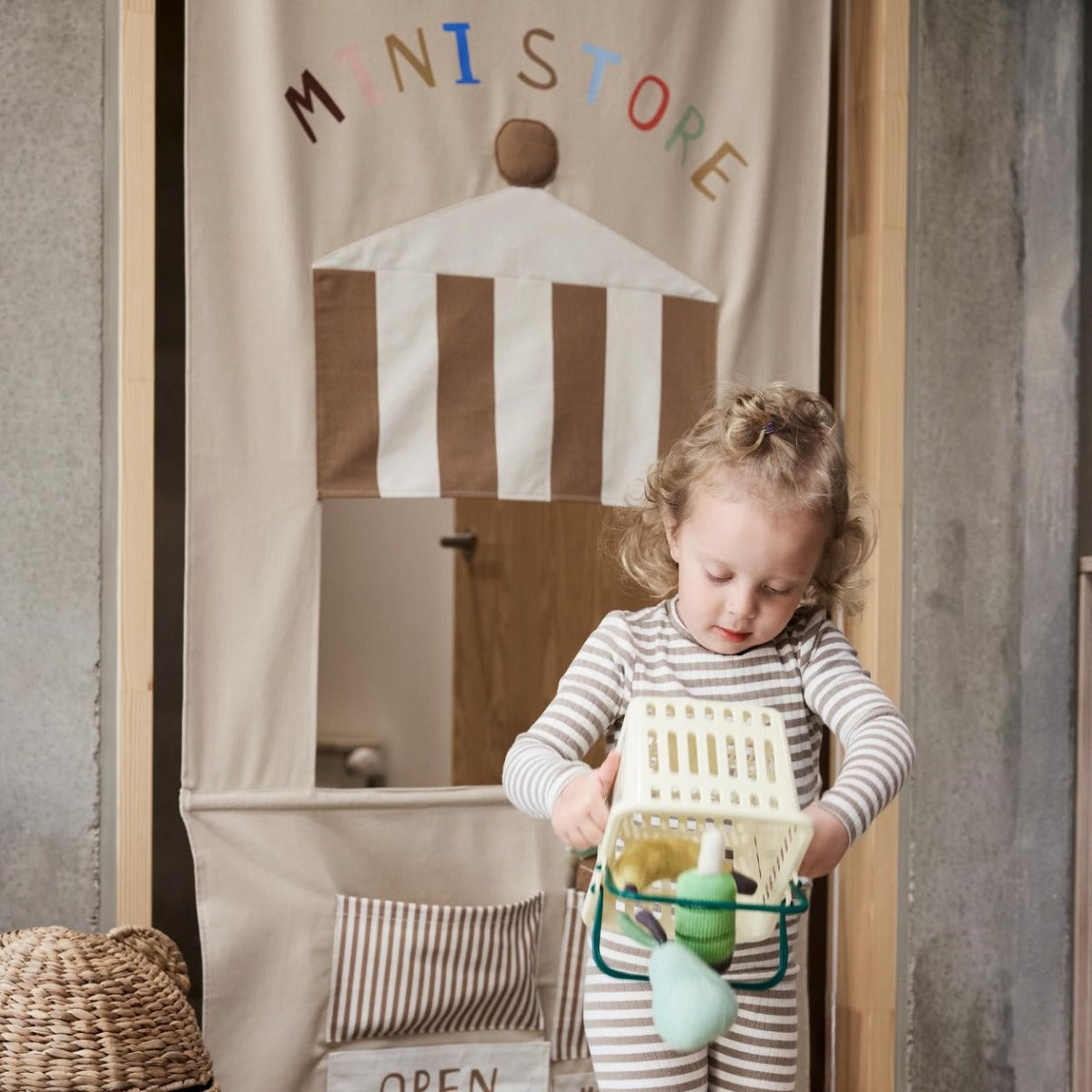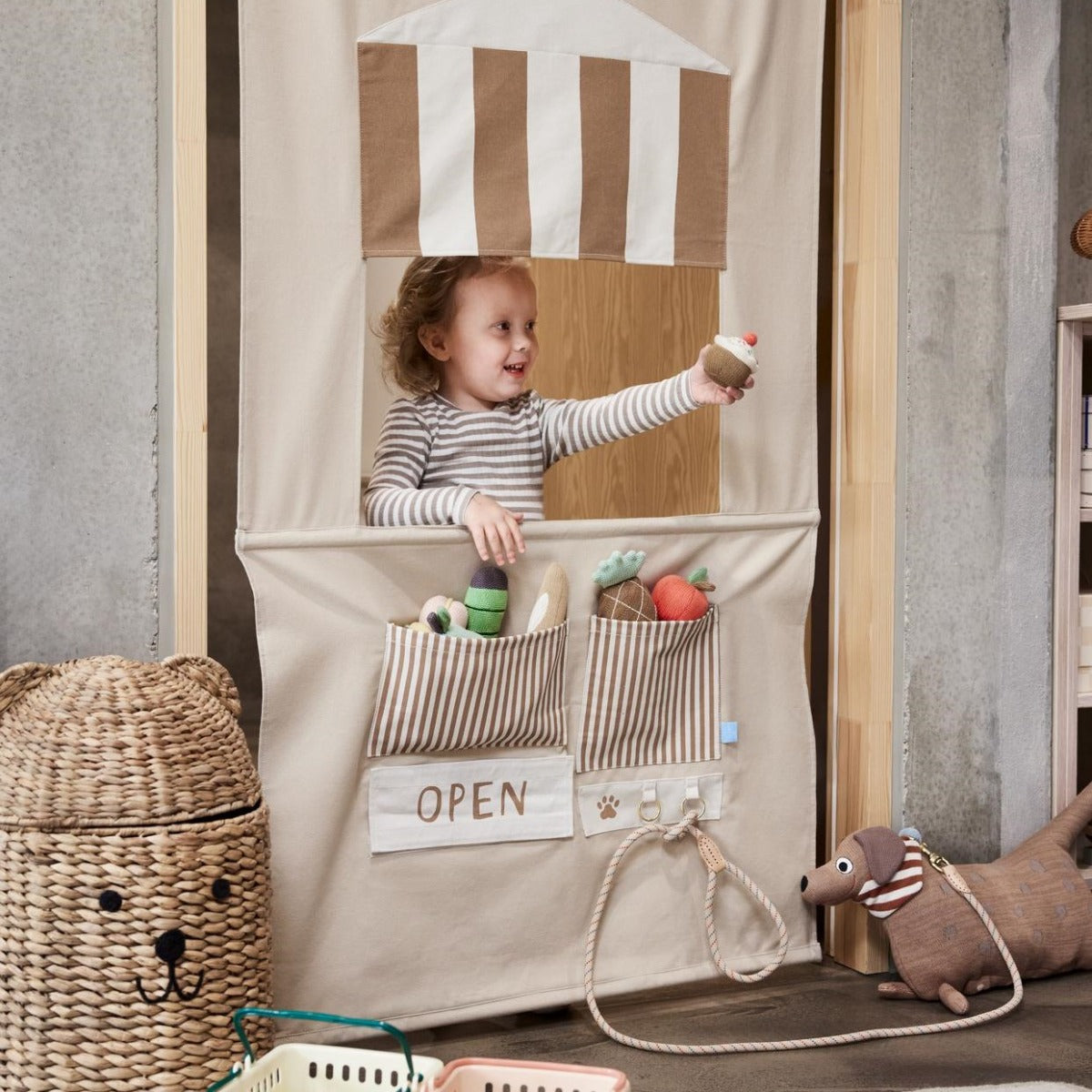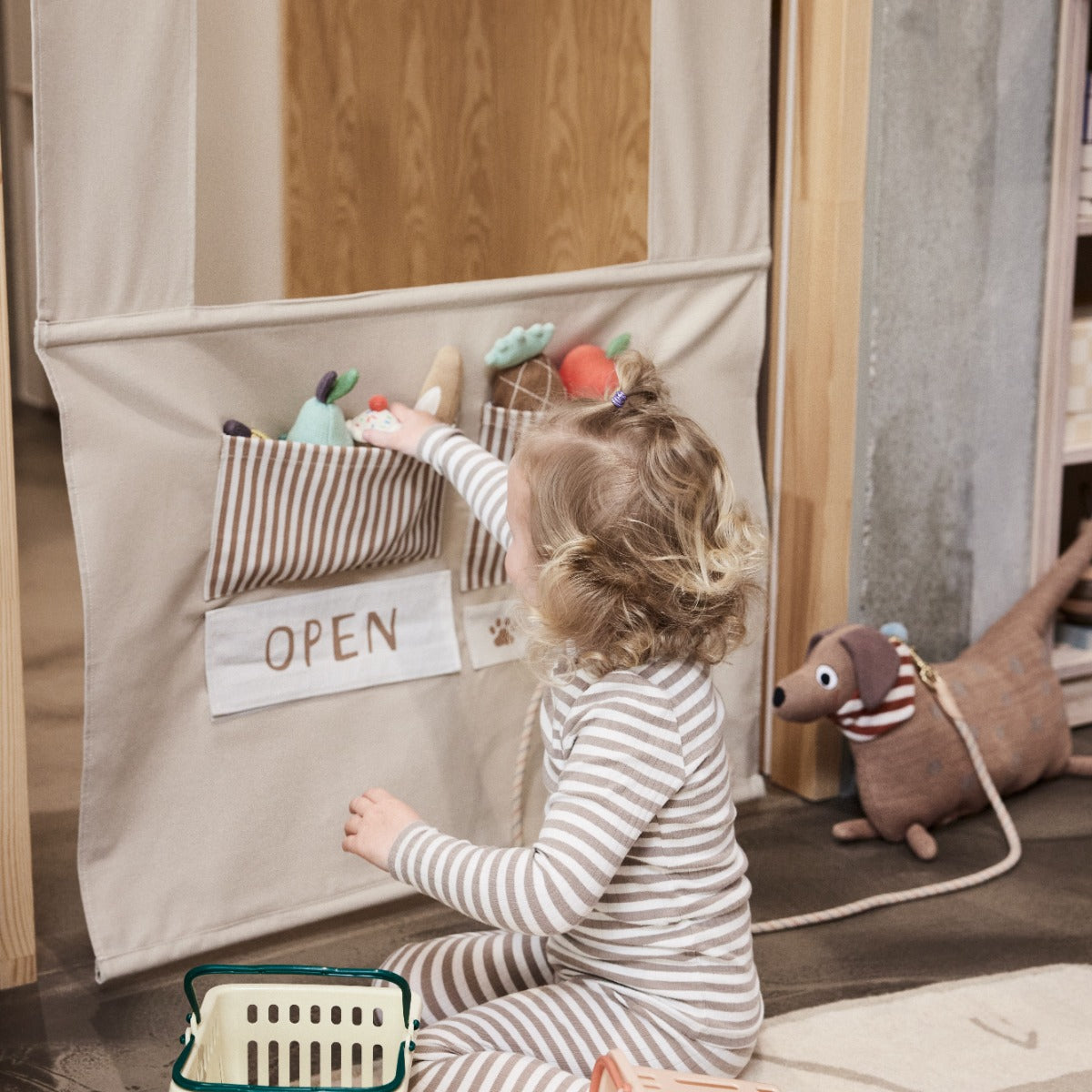Yummy Mini Store
Yummy Mini Store
SKU:OYM107622
Low stock
Couldn't load pickup availability
Overview
Overview
The Yummy Mini Store opens up a world of creative play! Hang it in a doorway using the loops or on a telescopic rod for a fun setup. With goods displayed at the front and adjustable open/closed signs, it’s perfect for imaginative grocery store adventures. This interactive toy encourages creativity and provides endless entertainment for little ones!
Technical Specification
Technical Specification
Delivery and Returns
Delivery and Returns
- Delivery: Free within NZ on orders over $100 (excluding bulky items) or $8 standard shipping
- Returns: Accepted within 14 days of receipt with proof of purchase
- Some items are excluded from returns including sale items, hardware, car seats, prams, monitors and personal items - please click here for the full list.
Share this product
Recently Viewed Products
Related Blogs
How to Store a Car Seat Between Children
As parents, we often find ourselves marvelling at how quickly our little ones grow. One day, they're nestled securely in their capsule and before we know it, they're moving on to a convertible car seat. If you're planning to store a capsule for a future sibling, you’ll want to ensure it remains in excellent condition, ready to protect your next bub. One of the main concerns during storage is preventing mould, which can be harmful to your baby's health and damaging to the car seat. Also, be aware that car seats do have an expiration date. Check this before packing the seat away. Here are some storage tips to help keep a capsule clean and mould-free: 1. First Step - Clean Thoroughly Before you even think about storing the car seat, it’s crucial to clean it thoroughly. Mould thrives in dirty, damp environments, so you want to ensure the seat is as clean as possible. Remove Fabric Covers : Start by removing any fabric covers, cushions, and padding that can be taken off. Many of these can be machine-washed. Check the manufacturer’s instructions for your seat. Wipe Down You can spot-clean your harness and straps with warm water and a non-abrasive cloth (ensure you follow your instruction manual for advice as some manufacturers allow the use of soapy warm water). Vacuum Pay close attention to crevices that can accumulate crumbs, sand and dirt. Dry Completely : After washing, make sure that every part of the seat is completely dry before storage. Leaving any moisture behind is an invitation for mould growth. Some drying time in the sun is great as ultraviolet light is a natural disinfectant. Read More about cleaning a car seat here. 2. Choose the Right Storage Environment Where you store the car seat is as important as how you clean it. Cool, Dry Place : The storage area should be cool and dry. Avoid basements, garages, or attics if they’re prone to humidity, which can encourage mould growth. A closet or spare room inside your home, where temperatures are more regulated, is ideal. Elevated Position : Store the car seat off the ground to avoid potential contact with dampness. Packaging : Seal the seat in a plastic bag and then in a cardboard box for protective storage. If you’ve kept the original box the seat came in, that’s ideal. Ensure you have all the pieces together including the manual, any infant inserts and even the car seat adapters for your stroller. However you may want to store the fabric covers separately in the linen cupboard if you have one. 3. Check Periodically It’s a good idea to regularly check on the car seat during storage to make sure there’s no exposure to damp or pests. 4. Pre-Use Inspection Before you use the car seat for your next child, inspect it thoroughly. Check for any signs of damage, mould, or mildew. Give it another clean if necessary, and ensure that all components are still in good working order. Final Thoughts Storing a capsule car seat between children can save you money and reduce waste, but it requires careful cleaning and storage to keep it in top condition. Don’t forget to get it out of storage and do that pre-use check nice and early so you have everything sorted well before the new bub arrives.
Learn moreTop Ten Tips for a Successful Naptime
Naps are more challenging than night sleep but can be done. Napping is incredibly important, not just for your baby’s wellbeing, but for yours too. When naps are too short, erratic or unpredictable, it can be frustrating, worrying and exhausting. If you’re struggling to get your baby or toddler to nap, these ten tips could help. 1. Look out for sleep cues Ideally, your baby will be ready for sleep, but not overtired which can make napping harder. Keep an eye out for signals like frowning, jerky movements, scratching their ears or head, or making grunting noises. Toddlers may get sillier, louder, or easier to upset. 2. Skipping a nap won’t make for better sleep later Don’t skip a nap with the hope that your baby will have a better sleep later. Missing a nap will lead to overtiredness, making napping even harder. If your child has skipped a nap, they might need to go to bed earlier to make up for it. 3. It’s ok to try later If your baby is point-blank refusing to nap, it’s ok to take a break. Try pausing, and doing something else with them. If you’re following a sleep-training technique or trying to break a sleep habit, it’s ok to revert to what you know will work – you can try again when your baby is no longer overtired. 4. Avoid device screens TV, computers and other devices with screens emit blue light, which can disrupt melatonin production – the hormone that makes people feel sleepy. Watching TV up to 90 minutes pre-nap can lead to less nap time, or missing sleep altogether. This can add up to a sleep deficit, which can make the problem worse. Keep screen time to a minimum and after nap time only. 5. Develop a schedule You need to find a balance between naps and feeding, so your baby isn’t waking up because of hunger. To maximise sleep it’s also important that there is enough (but not too much!) time between sleeps. For many parents, a schedule makes this easier. Every child is different, but this sleep and feeding schedule will help give you an idea of what could work. 6. Have a pre-nap routine Bedtime routines are important – and naps need them too. Create a short pre-nap process that is a pared-back version of what you do at night. It should be cosy and relaxing, preparing your child for her nap. 7. Keep the light low and encourage quietness Your baby will find it easier to fall asleep and stay that way in a cool, dark, quiet room. To create this ideal sleep environment, check the room isn’t too hot – between 18 and 21 degrees Celsius is ideal. Hang blackout drapes, and use white noise to block out sudden noises. 8. Consistency is key Aim for at least one nap at home during the day – ideally the first of the day. If you’re out and about, the naps aren’t as restful as ones at home, which will lead to your baby becoming overtired. 9. If your baby stops napping, don’t panic Your baby can stop napping for many reasons – illness, teething, a sleep regression, a growth spurt, a developmental leap, or a change in napping schedule. During sleep regressions, your baby or toddler will change their sleeping patterns for the worse. This is exhausting and stressful, but it’s normal. This regressions generally align with big developmental leaps, around 4 months, 8 months, 11 months, 18 months, and 2 years. Nap transitions are when a child’s sleep needs change. Commonly newborns will nap 4-5 times a day, which drops to 4 at about four months old. Then, from 5-8 months, they’ll have around three naps and start resisting the fourth. From 9-18 months this will reduce to two naps a day, and you can expect your child to continue having one (ever shorter!) nap a day until they're about 3. 10. Be kind to yourself Naps are notoriously tricky to manage – your baby won’t have the same sleep pressure during the day as they have at night, so even small things can throw you off course. Like everything else involving babies, be patient with yourself and them. What’s ‘normal’ won’t work for everyone, so give yourself permission to have a bit of trial and error, and allow gentle deviations from the routine when required. Persistence, flexibility and support Naptime doesn’t have to be a struggle. Keep an eye out for sleep regression or nap transitions, and adjust schedules accordingly. Keep persisting, ask your friends and family for help and support, and pay attention to your baby’s natural tendencies. Before long, nap time will be something to look forward to!
Learn moreDimples Says Hello to Christchurch
Dimples Says Hello to Christchurch As of the 17 th of December, Dimples will be opening the doors to our very first retail store in Christchurch. Located in the beautiful area of Sydenham pop in and meet the amazing new team of staff at 20 Durham Street South. Dimples is renowned for being a one-stop shop for your little one, and our Christchurch store will be no different. Offering high-quality products and a variety of different designer baby brands, our wonderful store is in the perfect spot for customers to head in and pick up all their favourite products. Much like our Auckland retail store, our retail staff will be trained as car seat technicians, therefore when you purchase a car seat through us you can get one of our experts to make sure it is safely fitted to your car. We are so excited to be opening our first store in the South Island and cannot wait for all the friendly face that we are going to meet. To celebrate the opening of our Christchurch store we will be offering a free Dimples Baby on Board sticker to all our new customers. See you soon Christchurch x
Learn moreTips & Tricks for Travelling with a Baby or Toddler
Travelling with Kids: Your Fun, Fuss-Free Guide Heading off on a family adventure? Travelling with little ones can be full of magical memories – but let’s be honest, the planning and packing can feel a bit overwhelming. We’ve put together some handy tips and a comprehensive checklist to help make your trip smoother (and a lot more fun!). 🏖️☀️ Before You Go: Planning Ahead Research your destination: Does your accommodation provide a cot, high chair, or other baby-friendly gear? Think about how you’ll get around too – will you need car seats or airport transfers? Book smart: When booking flights, don’t forget the extras. Request a bassinet if needed, look for seats with extra legroom, and pre-order kids’ meals. Check your airline’s baggage policy and what baby gear you can bring. Get your documents sorted: Make sure everyone’s passports are up to date (including baby’s – with at least 6 months’ validity). Don’t forget visas and any required immunisation records. Getting There: In-Flight Tips Arrive early: Give yourself extra time to get through the airport stress-free. Take advantage of priority boarding – it gives you a few bonus minutes to settle in before the crowd. Ears and altitude: Offer a bottle or breastfeed during takeoff and landing to ease pressure on their ears. A pacifier or sippy cup can also help. Keep boredom at bay: New toys or books they haven’t seen before can work wonders – try magnetic books, sticker books, or even a stack of post-it notes for endless sticking fun. Load up your device with baby-friendly apps or videos for those moments a toy just won't do. Snacks, snacks, snacks: Pack food you know they love – and plenty of it! Snacks can be both fuel and entertainment. Once You Arrive: Making the Most of the Holiday Stick (loosely) to routine: Keeping to familiar nap and mealtimes can help your little one adjust. But travel rarely goes perfectly to plan, so go with the flow where you can. Baby-proof your space: Once you get to your accommodation, do a quick scan of the room. Move anything hazardous out of reach so you can relax and enjoy your time away. Stay cool and sun-safe: Keep fluids up and protect sensitive skin with sunscreen, sunhats, and breezy clothing – especially in tropical destinations. Your Ultimate Packing Checklist (with links to products we love!) Important Documents: Passports and visas Luggage ID tags (don’t forget to label strollers and baby gear too) Travel insurance Carry-On Essentials: Nappies and wipes (pack more than you think you’ll need) Disposable change mats - super handy for when you're on the go Spare clothes for baby and you Swaddle or blanket Pacifier and a favourite cuddly toy Snacks and meals Bottles and formula (if needed) Baby-safe hand sanitiser - we love this one from Paume Toys and books Tablet with headphones Baby carrier for hands-free travel For older toddlers, consider the Jetkids Bedbox by Stokke – a ride-on suitcase that converts into an inflight bed! Baby Gear & Equipment: A compact travel stroller (like the YOYO) that fits in overhead lockers is a game-changer Travel cot if your accommodation doesn’t provide one – bonus as it doubles as a play space! For bigger kids, the Stokke Cloud Sleeper inflatable bed is a great option White noise machine - we love the Yogasleep Hushh Stroller fan for warm climates Insect nets for cot and pram Car seat – different countries have different rules, so it's very important to research ahead. We recommend the Maxi-Cosi Nomad for its light weight and compact size (suitable from approx. 15 months to 4 years) Portable blackout blinds for the room, or even a stroller shade to help with daytime naps Clothing & Accessories: Weather-appropriate clothes, including wet bags for damp items Sleep sacks (bring one your child is used to, and adjust for warmer/cooler climates) Sun protection – sun hats, sunglasses, and lightweight layers Feeding: Bottles or sippy cups Enough formula or food for the trip (plus some spares) Bibs, burp cloths, and baby-safe detergent Changing, Hygiene & Health: Nappies and wipes (pack for a few days, then restock locally) Sunscreen and insect repellent Baby-safe medication, thermometer, and first aid basics Travel-sized toiletries and nappy cream Once you’ve nailed your list, save a copy for next time. A notes app on your phone works perfectly! Bon voyage and happy travels with your mini adventurers! ❤️
Learn more

